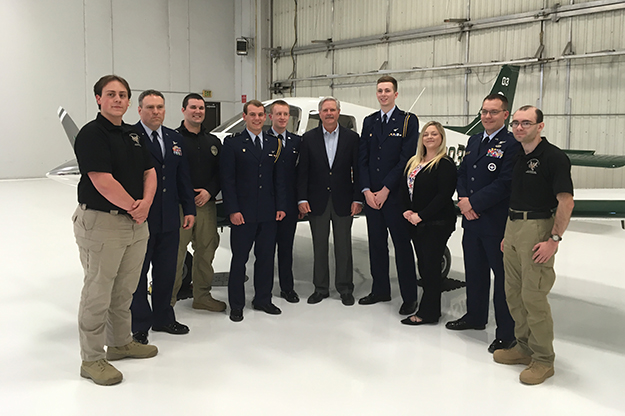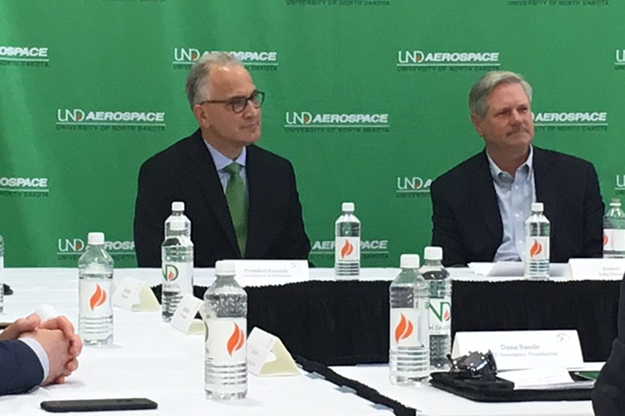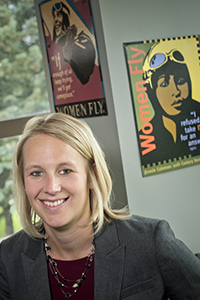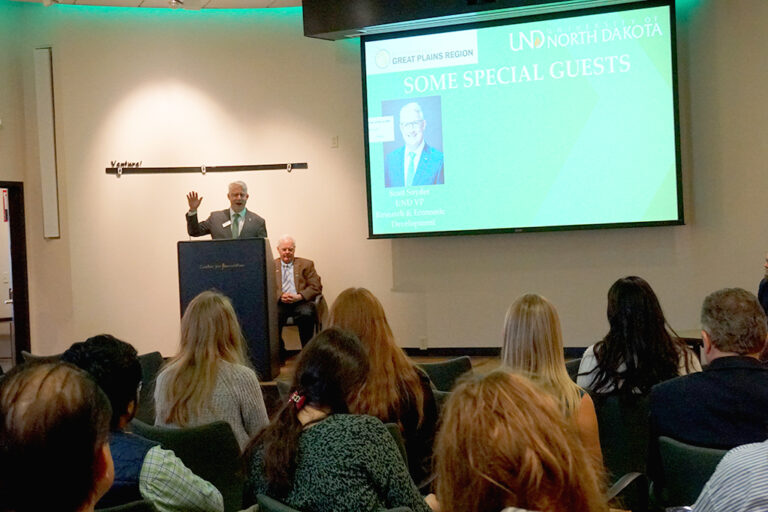Preparing for takeoff
Sen. Hoeven: UND, regional aviation partners are solution factories for industry-wide pilot shortages

UND Aerospace is poised to be the solution that the aviation industry has been yearning for to help end its long-dreaded pilot shortage.
But there are federal policies and rules in place that hinder flight schools, such as the John D. Odegard School of Aerospace Sciences at UND, from doing even more to produce the world’s next crop of well-trained pilots and air traffic controllers.
Sen. John Hoeven, R-N.D., heard that message loud and clear on Friday when he visited the flight school’s airport headquarters for a meeting with University and regional aviation leaders.
There, Hoeven laid out the basics of a multi-pronged plan for how he’d like to expand the University’s role in training aspiring pilots, including tapping into flight training for the military and other federal agencies.
The strategies would lead to more flight training at UND and could mean more jobs locally through links to nearby Grand Forks Air Force Base and the adjacent Grand Sky unmanned aircraft business park and FAA test site, as well as enhanced partnerships with federal agencies such as U.S. Customs & Border Protection.
“For me jobs are always job one,” Hoeven said.
He went on to tout how uniquely qualified UND Aerospace is to help solve pilot shortages by working with these regional aviation partners.
“Here you have UND, with its world-class facilities at the John D. Odegard School of Aerospace Sciences, leading the world in commercial aviation and unmanned flight training,” said Hoeven, looking toward UND President Mark Kennedy and UND Aerospace Dean Paul Lindseth, who were part of the meeting. “You’re the epicenter.”

Certified to instruct
Kennedy and Lindseth were joined by about a dozen other movers and shakers in the regional aviation community, including representatives from private-sector unmanned innovators, Northrop Grumman and General Atomics; Customs & Border Protection; and the UND Aerospace Foundation. They all showed up to let the senator know what more he could do on Capitol Hill to help them.
Elizabeth Bjerke, UND Aerospace associate dean, told the senator that the flight school is seeking an exemption from FAA rules that make it harder for the school to retain its next crop of certified flight instructors.
“Right now, our incoming classes are bigger than our senior classes,” Bjerke said, “so, we have this huge number of students who want to become instructors but only 14 who are certified to instruct them.”
Students aiming to become certified in flight instruction must be taught by other certified flight instructors, Bjerke said.
Currently, the FAA requires 1,000 hours of flying time before one can be a certified flight instructor, unfortunately, Bjerke says, a student doesn’t usually meet that requirement until they’re ready to move on to a job with the airlines. The exemption would effectively loosen and streamline requirements for becoming a certified instructor at UND, allowing the University to meet demands.
Policy changes

Next, Bjerke urged Hoeven to look into FAA policies related to air traffic control (ATC) training that put college degree programs, such as those at UND, at a competitive disadvantage.
About four years ago, the FAA greatly reduced requirements to advance to its ATC training headquarters in Oklahoma City. The FAA was basically recruiting potential air traffic controllers off the street, with only a cursory psychological evaluation as a basis.
The move impacted UND and other College Training Initiative (CTI) schools. At UND, at one point, enrollment in the ATC degree program dropped from about 300 to around 100.
Recently, the FAA changed its policies again, due, in part, to a high dropout rate among the “off-the-street” recruits. Now 50 percent of its candidates for advanced ATC certification must be either veterans or from CTI programs.
But Bjerke said UND would prefer that the FAA draw all of its candidates for advanced ATC training from veteran and CTI graduate pools, until they are exhausted.
Hoeven said he would use input from Friday’s meeting to develop legislative strategies or plans to tackle the issues administratively by dealing directly with the FAA.


